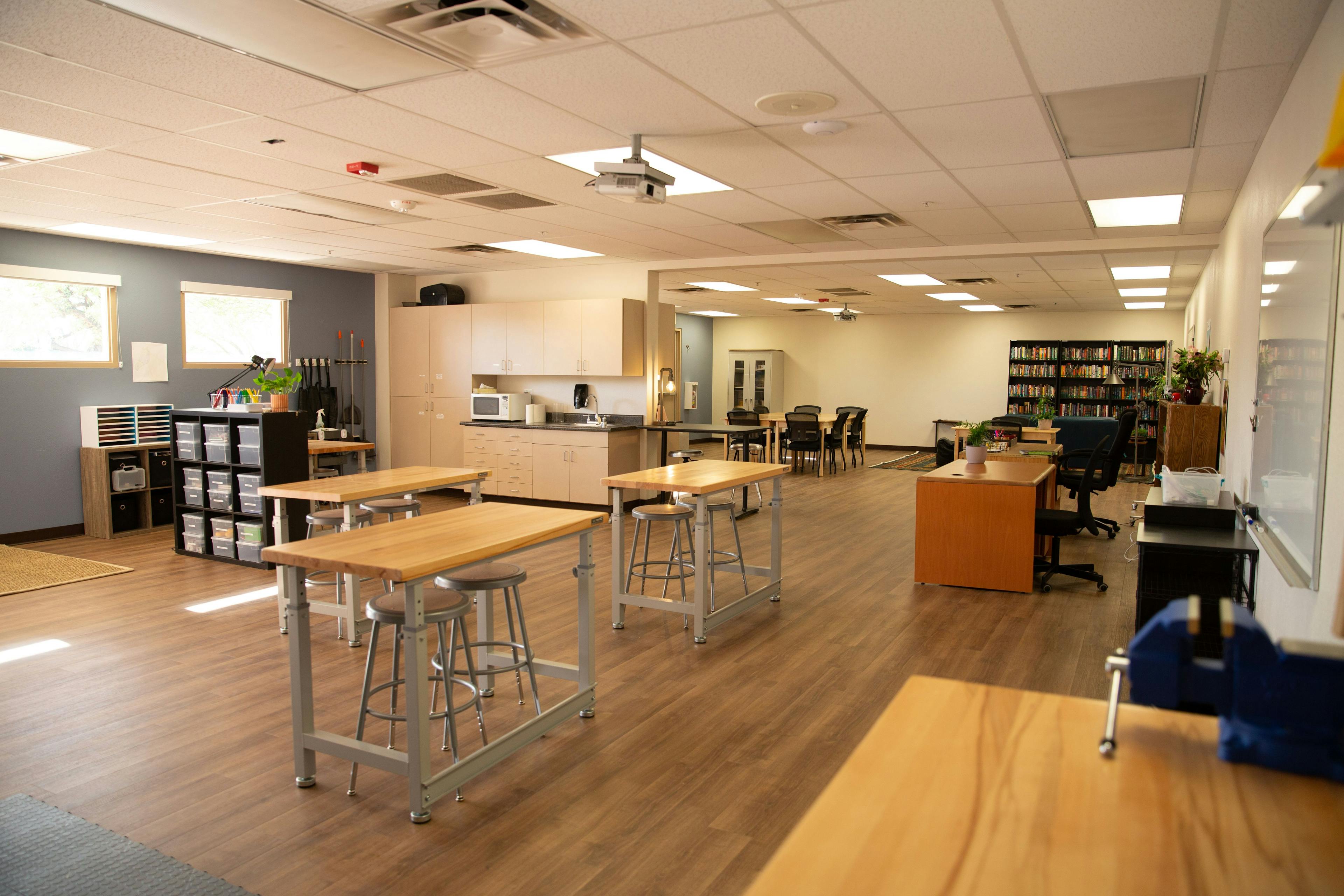What is the "Prepared Environment"
“He has no need of adult influences to call out his activity, a tranquil environment suitable to the interests of his age and the freedom to follow the promptings of his own inner need are sufficient for him.” – Maria Montessori
Montessori educators talk extensively about the “prepared environment.” This is Montessori’s word for the classroom: the physical space, but also the intangible elements - the culture, the routines, the schedule, the norms. Everything that communicates, without a word, the values of the school. The prepared environment is the third component of a triad containing the guide and the student: a “third teacher.” Without a lesson, the environment nonetheless teaches its students about the type of world they inhabit, about the values of their school, and about the trust (or lack thereof) that the adults hold for them.
In a Montessori community, we work hard to ensure that the unspoken message of the prepared environment is as intentional as any other part of the educational program. So what does this look like, and specifically, what does it look like for students in a middle or high school program?
If you enter a Montessori classroom, you might first notice that it is beautiful. And hopefully you will notice also that it is intentional. From the tables and chairs to the decorations, even the soap at the sink, are chosen intentionally and for a purpose. The space is orderly, clean, and well-maintained. Materials and supplies are arranged in a way that is intuitive, systematic, and attractive. Everything has its place. In an younger classroom, this takes the form of low shelves, just the right height for the children in that class. Materials that are used together are marked with the same color, held on the same tray, or in the same basket. The addition of natural elements like plants and flowers, and a careful attention to the art and artifacts on display, create a space that is both organized and beautiful.
What does this look like in an adolescent environment? The materials at this age become less proscribed. A lesson will not necessarily require the same set of physical objects. Instead, the environment begins to support the student’s ability to create their own work, define their own projects, and explore their own interests. Each room has a supply cart or shelf with papers, pens, rulers, and other daily items. These are readily available, accessible, and welcoming: inviting students to easily reach for a straight edge when creating a math diagram, or a pack of colored pencils when decorating a journal entry in humanities. The environment invites students to use the right equipment to actualize their potential.
At every age, the environment is designed to be accessible to students without the intervention of an adult. For young children, this means that the tables and chairs are the right size for younger pupils: chairs a toddler can move independently; a table that is designed to be the comfortable height for a student in early elementary. In adolescence, the nature of that access changes. Consider our Makerspace areas, spaces dedicated to building and exploring creative potential. These areas hold woodworking tools, 3D printers, sewing machines, paints, clays, and more.
The equipment is accessible to students through a process of graduated independence. Students start with small group lessons, progressing to supervised use, then independent use, and finally becoming instructors in their own right. The environment, properly conceived and organized, promotes student agency. They gain both the physical tools and the cognitive knowledge to independently actualize their own values.
The physical space of a school matters. Entering a space of chaos and disorder enters into the soul and spirit of the people who share that space. Students will live up to the standards of the environment around them. A chaotic space encourages chaos; conversely, a space of external order promotes internal order as well. A space that is dirty and haphazard tells a student, “The world accepts dirt and disorder.” A space that is beautiful, with fresh flowers and plants, with each supply in its designated spot, with each label beautifully written, tells the student: “The world is full of beautiful things. You are worthy of beautiful things.You are trusted with a beautiful space. You are capable of creating beauty and order in your own life.”
The prepared environment is a daily, non-verbal reminder to our students of their value. This is the first, most consistent, and most enduring way in which we express that we care about our community, that we care about each other, and that we uphold in every choice the same standards of excellence we ask for and expect in our work.
You May Also Like
Why do we study history?
- montessori education
Why Do We Study Literature?
How do grades work at ATI?
- mastery-based assessment
- montessori education

